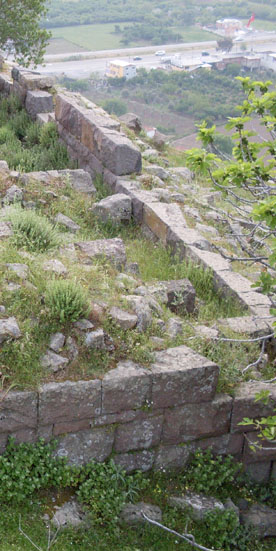Larisa in Aeolis. Studies on Settlement and Architecture

The settlement remains of Larisa in Aeolis (Asia Minor) were already studied by Swedish and German archaeologists in the first half of the 20th century. In spite of the difficult circumstances of the Second World War, the results of the excavations could be published in three volumes. However, the architectural documentations have remained largely limited to the acropolis, and a large-scale survey to cover further areas of the ancient city could not be accomplished until recently. From 2010 onwards, Larisa and its immediate surroundings have been studied within the frame of an architectural survey of İstanbul Teknik Üniversitesi (ITU) with new capacities.
According to the results of latest works, Larisa consisted of two core settlements (Larisa West and East), which are only 1.5 km distant from each other, and developed each on and around a hilltop. Larisa West functioned principally as a ruler’s residence and included the acropolis with representational buildings, as well as the city areas on southern and northern slopes. The milder southern slope features an extensive city with dwellings. Numerous wall remains point out partially a regular planning. The steep northern slope has become essential with the rests of a theatre, which were identified and documented in 2018. Larisa East, located on a higher hilltop served as the natural acropolis of the (western) city providing the citizens a refuge with its fort. Below the fort, to the East, there is a small settlement area revealing remains of houses on natural terraces.
The core settlements of Larisa West and East were connected to each other with the necropolis and the area reserved for agricultural purposes. The necropolis stretches in the direction of Larisa West, and consisted primarily of tumuli, of which the most imposing one comes forward with its krepis wall measuring a diameter of approx. 55 m. The extensive area of agriculture is closer to Larisa East, and displays agricultural buildings and terraces.
A great number of building traces, most of them recently identified during the course of the Larisa field project, have contributed so far a great extent to our knowledge concerning the settlement structures in Anatolia from the mid-6th to the end of the 4th century BCE.
